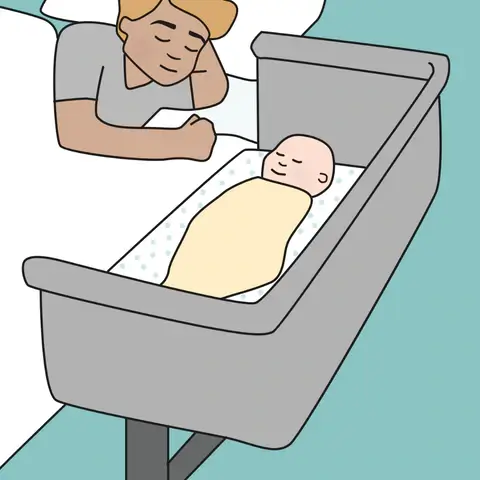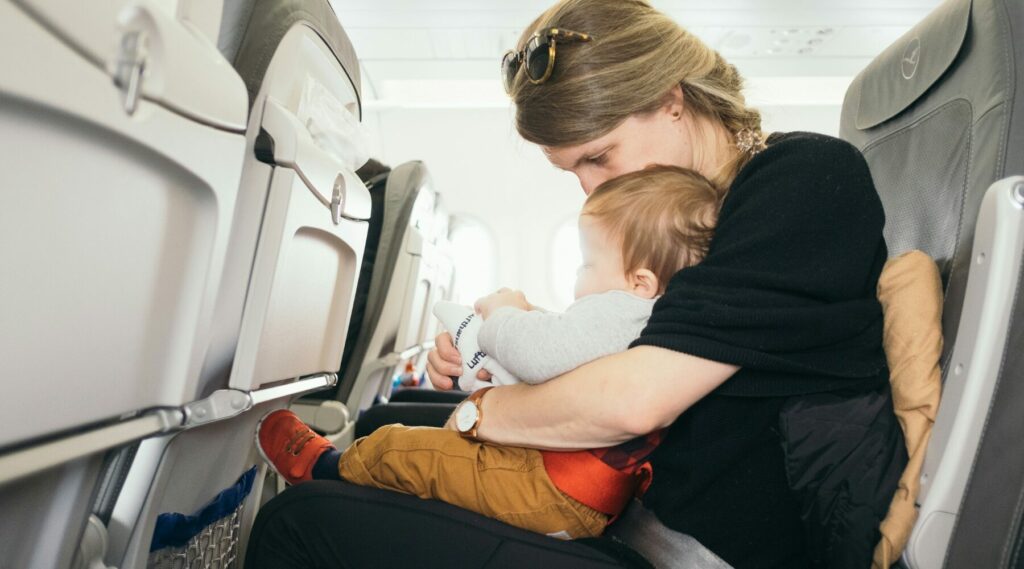SIDS guidelines recommend room sharing for the first 6 months
The Red Nose Foundation and American Academy of Pediatrics recommend room-sharing for the first 6-12 months of your baby’s life. This has shown to reduce the risk of SIDS (sudden infant death syndrome) and makes it more convenient to comfort, feed and watch your baby. This advice for a baby to be in your room is excellent, but it doesn’t specify exactlywhere in the room. Here’s my answer…
CONTEXT:
- It’s magnificent that families come in all shapes and sizes; mother & father, 2 mothers, single parent, etc – for ease of conversation, I oftenrefer to a mother and father – but understand when I reference dads or fathers I’m always referring to the non-breastfeeding (or non-birthing) parent in any family unit.
- In the first few weeks of a baby’s life, establishing a good milk supply for breastfeeding mothers requires overnight feeds. Once the supply and demand are well matched, we can begin to elongate the night sleeps.
Where should my baby sleep in our room?
When I ask parents of newborns where they plan to position their baby’s bassinet, there is an assumption that it lives beside the breastfeeding mother. This makes logical sense; but there are many other factors to consider.
Breastfeeding mothers SMELL LIKE BREASTMILK
One must understand that we wake babies just as often as they wake us. Overnight, we move around, snore, fart or mumble. These can all disturb a sleeping baby, but perhaps the least appreciated trigger is the smell of breastmilk!
Sometimes moving the cot to the other side of the bed where the non-breastfeeding parent is sleeping, or at the end of the bed – can be helpful, as your baby is less likely to smell the breastmilk, or be woken by your movements.

Fathers or non breastfeeding parents should be the first to settle
The benefits don’t end there. When a baby wakes overnight, if the father is the first to tend to them, they’re much more likely to re-settle for another sleep cycle (or longer), as hunger is not the only reason a baby wakes overnight.
They wake from the temperature, they wake from dirty nappies, from trapped wind, from becoming unswaddled… just to name a few.
If you immediately assume the cause is hunger, you might fall into a negative cycle of frequent feeds – this is enormously taxing on the whole family.
Moreover, if a breastfeeding mother holds their baby right next to the food source in an attempt to re-settle, it’s extremely difficult to achieve this – not to mention uncomfortable if you have begun a let-down due to being woken through the night.
Fathers are far more successful at re-settling a baby overnight
This is because we:
(a) don’t smell of breastmilk, and
(b) send a very strong message to the baby – in our handling – that they aren’t necessarily going to be fed.
This gives an invaluable benefit to the mother, who has carried the baby for 9 months, given birth and is often the main source of nutrition for the first months of life.
Sleep, stimulation and water are the 3 main ingredients of breastmilk
Stimulation, sleep and water are the three main ingredients to making breastmilk.
Stress and fatigue are two of the main causes of low milk supply!
So to stretch the overnight sleeps and protect the breastfeeding mother as much as possible, have the baby further away from her and have the partner try to troubleshoot and resettle before preparing for a night feed. It’s one important piece of the puzzle to get your baby closer to sleeping through the night.
Remember: wherever your baby is sleeping always ensure their sleeping environment is compliant with the SIDS safe sleeping guidelines. In the Dr Golly Sleep Program we don’t recommend routines and stretching overnight sleep until your baby is 6 weeks (5-6 kg)
Learn more about the Dr Golly Philosophy here.
Shop the Dr Golly age appropriate routines here.


